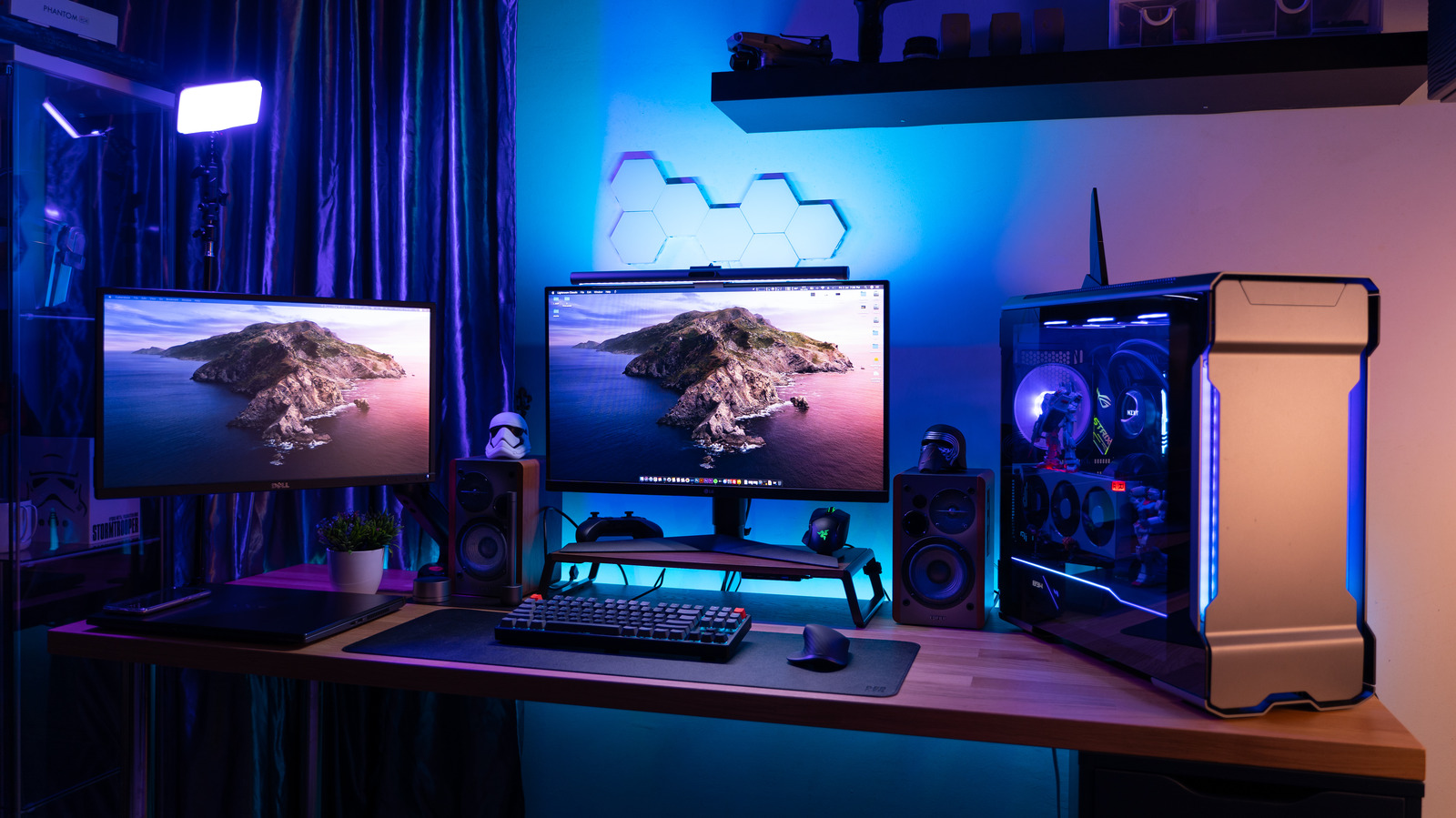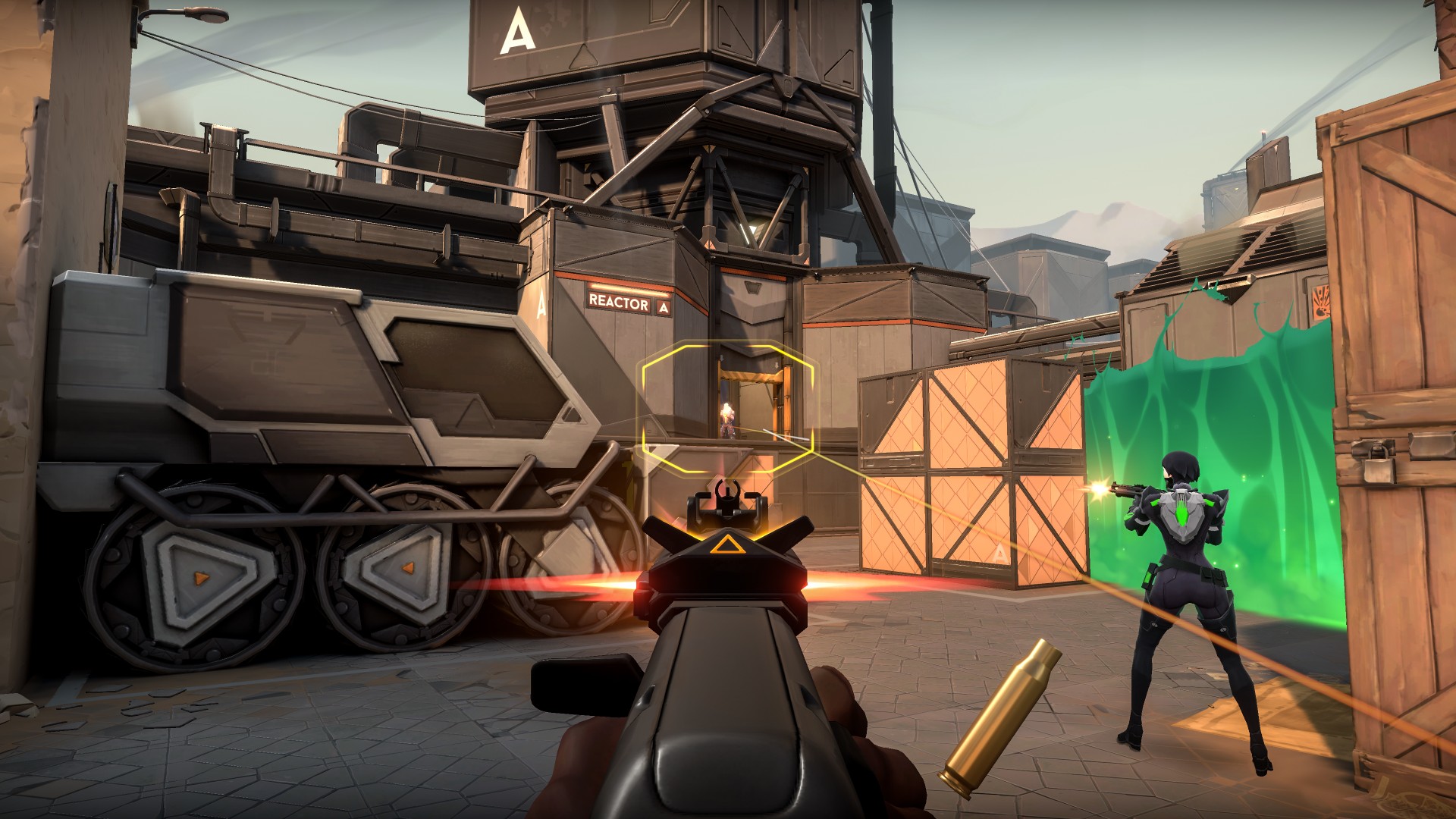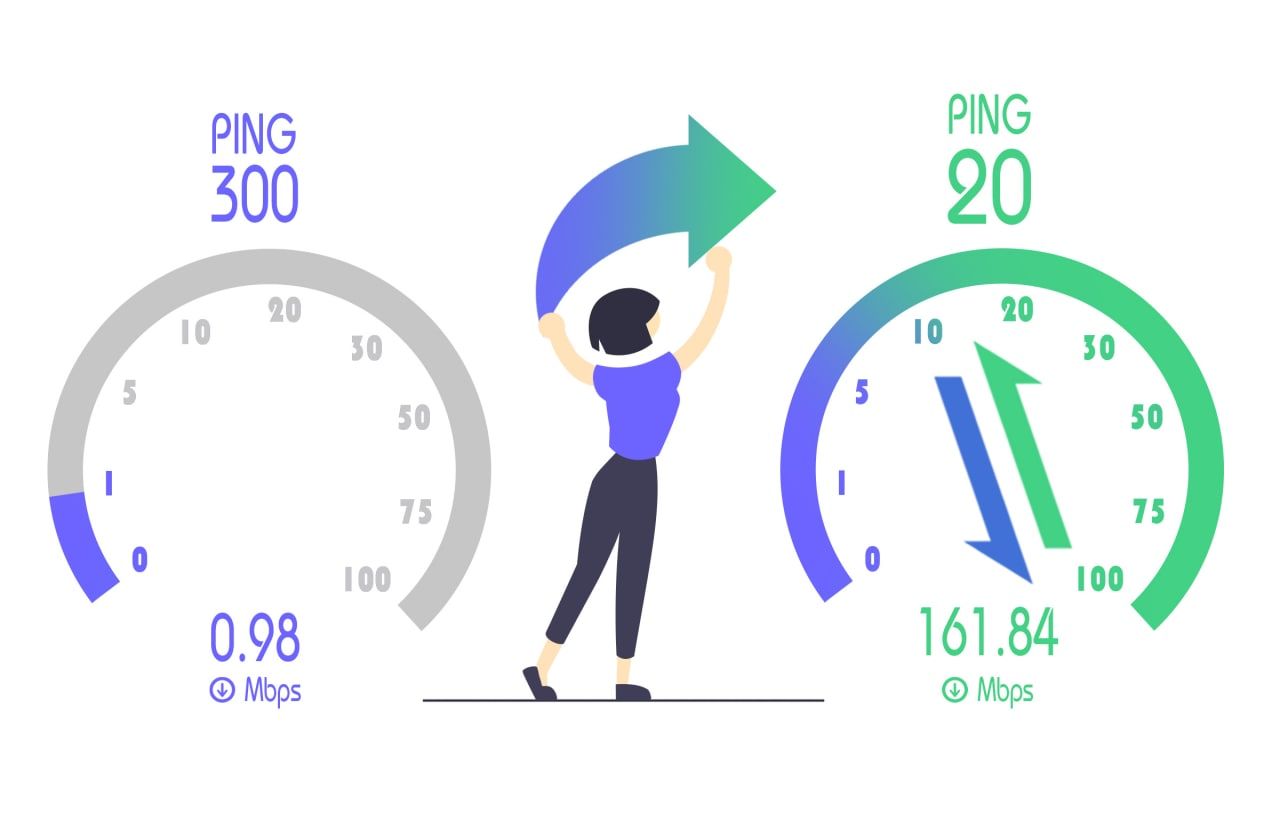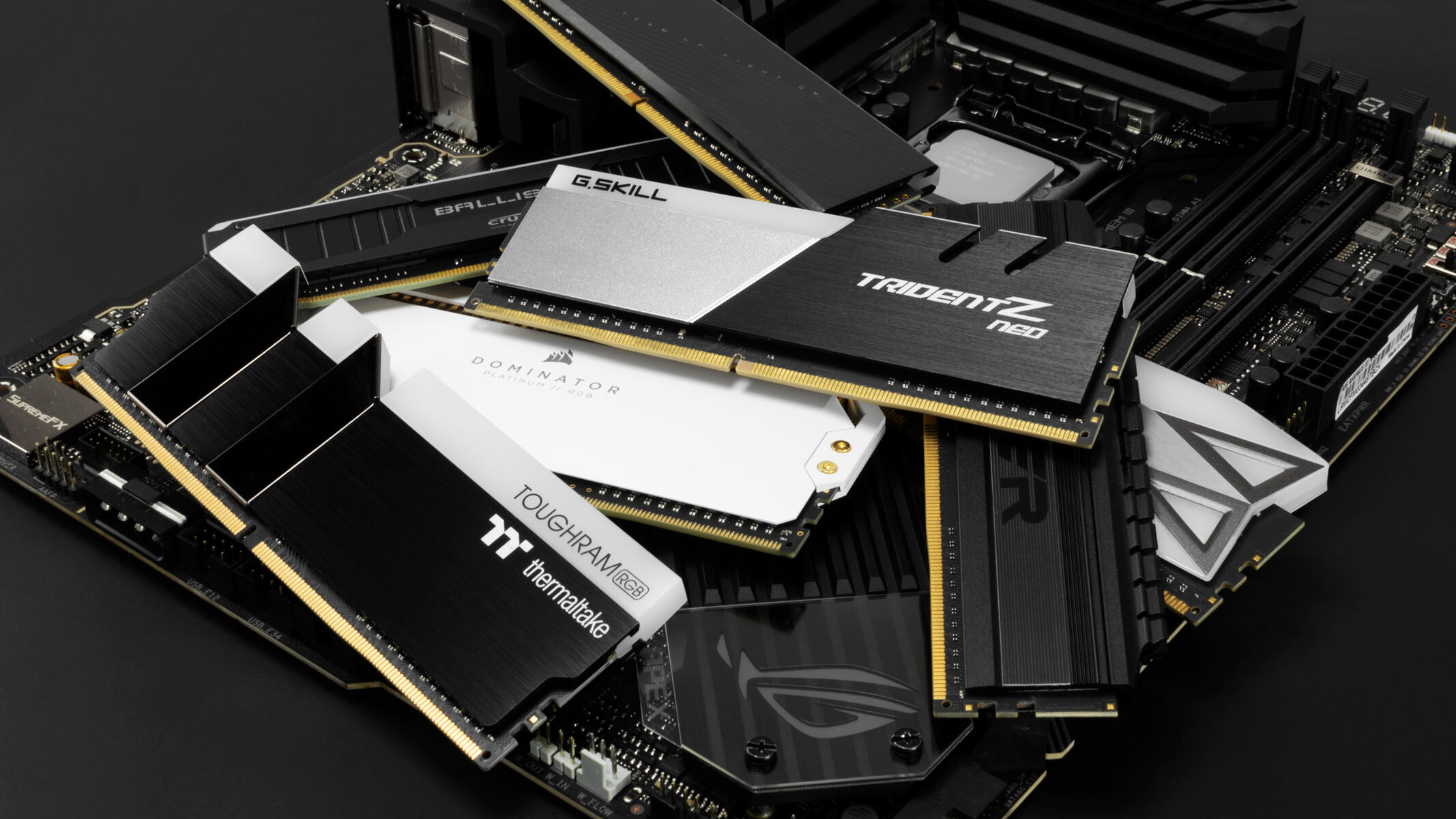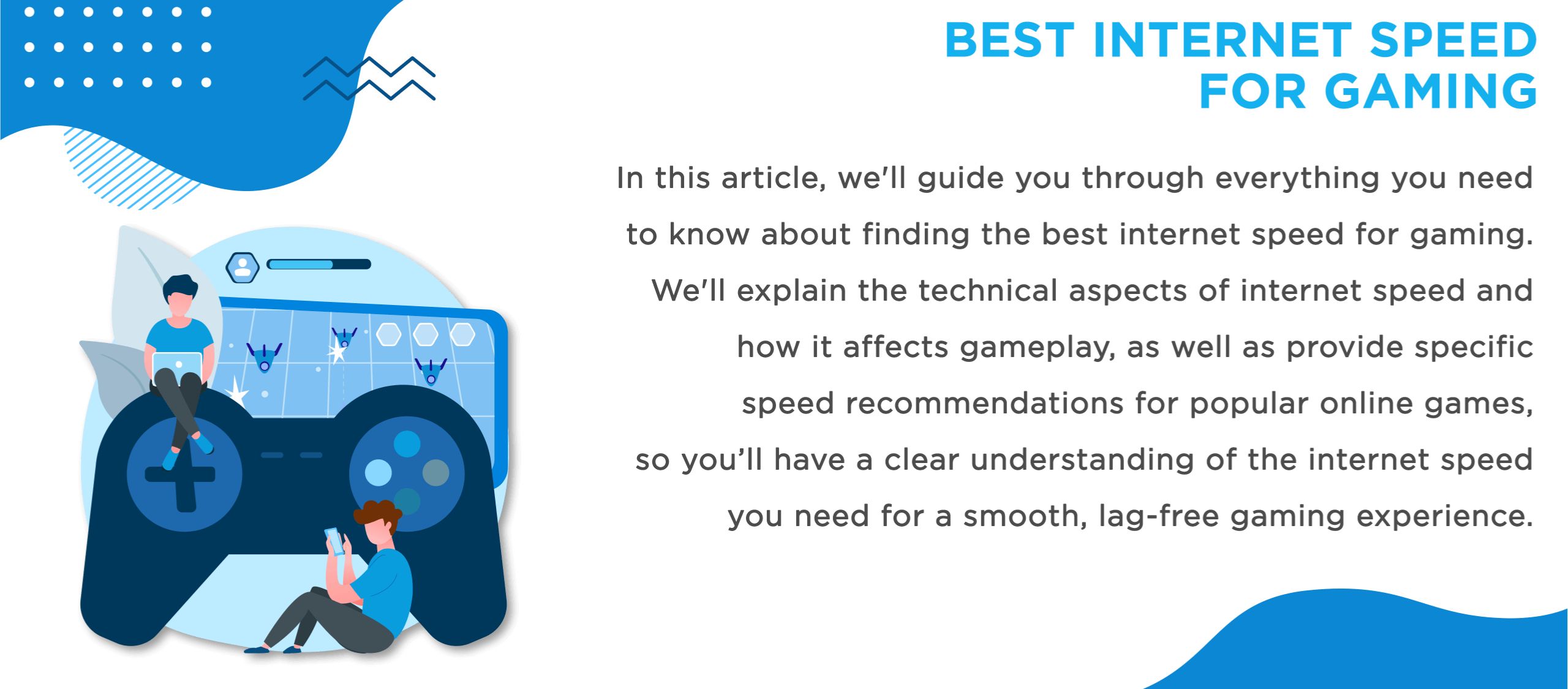Introduction
Welcome to the exciting world of online gaming! Whether you’re a casual gamer or a competitive player, you know that a smooth and lag-free gaming experience is essential for enjoying your favorite titles. One of the key factors that can greatly impact your gaming experience is latency.
Latency, also known as ping, is the time it takes for data to travel from your device to the game server and back. It is measured in milliseconds (ms), and the lower the latency, the better. A high latency can result in frustrating delays and lag, making it difficult to react quickly in fast-paced games.
Low latency is crucial in online gaming because it directly affects the responsiveness and real-time interactions between players. Imagine playing a first-person shooter where every millisecond matters – a high latency could mean the difference between a missed shot and a victorious headshot.
When it comes to online gaming, every millisecond counts. That’s why it’s important to understand what is considered good latency and how it can enhance your gaming experience. In this article, we’ll explore what latency is, why it matters, what is considered good latency for online gaming, and how you can optimize your network for a lower latency.
What is latency?
Latency refers to the time it takes for data to travel from your device to the game server and back. It is essentially the delay in the communication between your computer and the server hosting the game.
Latency is measured in milliseconds (ms), and it can be affected by various factors such as your internet connection, distance to the game server, and the efficiency of the network infrastructure.
Imagine you’re playing an online game where you press a button to shoot, and it takes a few milliseconds for your command to reach the game server. The server then processes the information and sends it back to your computer, resulting in the action being displayed on your screen. This round trip of data is what causes latency.
There are two main types of latency that you should be aware of:
- Game client latency: This is the delay between your actions in the game and the corresponding visual feedback on your screen. It is influenced by factors such as your device’s hardware, graphics processing, and the game’s optimization.
- Network latency: This is the delay caused by the data traveling through the network infrastructure, including your internet service provider (ISP) and the game server. Network congestion, routing inefficiencies, and physical distance can all contribute to higher network latency.
Both types of latency can have an impact on your online gaming experience. High latency can lead to delayed actions, noticeable lag, and a lack of responsiveness in the game. On the other hand, low latency ensures a smooth and real-time gaming experience, allowing you to react quickly to in-game situations.
Now that we understand what latency is, let’s explore why it is crucial for online gaming and how it can affect your overall gameplay.
The importance of low latency in online gaming
Low latency is of paramount importance in online gaming. It directly impacts the responsiveness, accuracy, and overall enjoyment of your gaming experience. Here are some key reasons why low latency is crucial:
- Real-time interactions: Online games often involve multiplayer interactions, where you’re competing or collaborating with other players in real time. Low latency ensures that there is minimal delay between your actions and their impact on the game. This is particularly important in fast-paced games like first-person shooters, where split-second decisions can make or break your gameplay.
- Fluid gameplay: High latency can result in jerky movements, delayed actions, and unresponsive controls. This affects your ability to navigate the game smoothly and can lead to frustration. With low latency, the game responds quickly to your inputs, providing a seamless and immersive gaming experience.
- Competitive advantage: In competitive gaming, every advantage counts. Having low latency gives you an edge over opponents with higher latency, as you’ll be able to react faster and make more accurate decisions. This can be crucial in online tournaments or ranked matches where even the slightest advantage can make a huge difference.
- Accurate aiming and timing: In games that require precise aiming or timed actions, such as shooting or combo moves, low latency is crucial. It allows for accurate and timely execution of actions, ensuring that your skills and strategies translate accurately into the game.
- Improved overall experience: Gaming is about entertainment and enjoyment. Low latency enhances the overall gaming experience by minimizing frustrating delays and lag. It allows you to fully immerse yourself in the game world without distractions, making it more engaging and satisfying.
To sum up, low latency is vital for online gaming as it enables real-time interactions, provides fluid gameplay, offers a competitive advantage, facilitates accurate aiming and timing, and enhances the overall gaming experience. Now that we understand the importance of low latency, let’s explore what is considered good latency for online gaming.
What is considered good latency for online gaming?
When it comes to determining what is considered good latency for online gaming, there is no one-size-fits-all answer. The acceptable level of latency can vary depending on the type of game and your personal preferences. However, as a general guideline, lower latency is always better for optimal gaming performance.
For most online games, a latency of around 20-50 milliseconds (ms) is considered excellent and will provide a smooth gaming experience. Latencies below 100 ms are also generally acceptable for casual gaming, but anything above that can start to become noticeable, especially in fast-paced and competitive games.
However, there are some exceptions to these guidelines. Certain genres, such as turn-based strategy games or online role-playing games (RPGs), may be more forgiving when it comes to latency since they are not as dependent on real-time interactions. In these cases, latencies below 100-150 ms are often acceptable.
On the other hand, for highly competitive and reaction-based games like first-person shooters or fighting games, even the slightest increase in latency can have a significant impact on gameplay. Players in these genres generally aim for latencies below 20-30 ms to maintain a consistent and competitive advantage.
It’s important to note that your gaming experience can still be enjoyable even with higher latencies, especially if you’re playing single-player or cooperative games that don’t require split-second reactions. Ultimately, the acceptable latency for online gaming depends on your individual tolerance and preferences.
Additionally, certain online gaming platforms or communities may have their own recommended latency benchmarks or requirements for optimal performance. It’s always a good idea to check if there are any specific guidelines or recommendations provided by the game developers or the gaming community you’re a part of.
Now that we have an understanding of what is considered good latency for online gaming, let’s explore some factors that can impact your latency and how you can mitigate them for a better gaming experience.
Factors that can affect your latency
Several factors can impact your latency in online gaming. Understanding these factors can help you identify and address any issues that may be causing high latency. Here are some common factors that can affect your latency:
- Internet Connection: The quality and speed of your internet connection play a significant role in determining your latency. If you have a slow internet connection or experience frequent drops in connectivity, it can result in higher latency. Upgrading to a faster and more stable internet package can help improve your latency.
- Network Congestion: High network traffic and congestion can lead to increased latency. When many users are simultaneously using the same network, the data packets can get delayed or prioritized differently, resulting in higher latency. Avoiding peak internet usage times or opting for a dedicated gaming connection can minimize network congestion and reduce latency.
- Physical Distance: The physical distance between your location and the game server can impact your latency. The farther away the server is, the longer it takes for the data to travel, resulting in higher latency. Choosing game servers closer to your location or using gaming VPN services can help mitigate this issue.
- Hardware Limitations: Your computer’s hardware, such as the processor speed, RAM, and graphics card, can impact your gaming latency. Older or underperforming hardware may struggle to process game data quickly, leading to higher latency. Upgrading your hardware or optimizing your current setup can help reduce latency caused by hardware limitations.
- Router and Network Settings: The settings on your router and network configuration can impact your latency. Issues such as improper Quality of Service (QoS) settings, firewall restrictions, or outdated firmware can cause increased latency. Optimizing your router settings and keeping your firmware up to date can help improve your latency.
- Background Processes and Applications: Other processes and applications running on your computer can consume bandwidth and resources, potentially increasing latency. Closing unnecessary applications and disabling background processes can free up resources for your game, reducing unnecessary latency.
- ISP Routing and Peering: The routing and peering practices of your Internet Service Provider (ISP) can impact your latency. Inefficient routing or poor peering connections can result in increased latency. Contacting your ISP to ensure optimal routing and peering can help improve your latency.
By identifying and addressing these factors that can affect your latency, you can optimize your gaming setup and ensure a smoother and more enjoyable gaming experience. In the next section, we’ll explore some tips on how to reduce latency for a better gaming experience.
How to reduce latency for better gaming experience
If you’re experiencing high latency in your online gaming, don’t worry! There are several steps you can take to reduce latency and improve your gaming experience. Here are some helpful tips:
- Upgrade your internet connection: Consider upgrading to a faster and more reliable internet package. Higher internet speeds can help reduce latency by ensuring faster data transmission between your device and the game server.
- Connect via Ethernet: Whenever possible, connect your gaming device directly to your router using an Ethernet cable. Wired connections provide a more stable and consistent internet connection compared to Wi-Fi, which can be prone to interference and signal fluctuations.
- Optimize your network settings: Adjust the Quality of Service (QoS) settings on your router to prioritize gaming traffic. This ensures that your gaming data gets priority over other less time-sensitive data on your network, reducing latency during gameplay.
- Choose the right game server: Select a game server that is geographically closer to your location. The shorter distance can significantly reduce the latency, resulting in a smoother and more responsive gaming experience.
- Close bandwidth-intensive applications: Close or limit the use of bandwidth-intensive applications running in the background while gaming. Applications such as video streaming, file downloads, and cloud backups can consume significant bandwidth and cause increased latency.
- Optimize your computer: Ensure that your computer is running efficiently by closing unnecessary programs, clearing temporary files, and optimizing system performance. This can free up resources and reduce latency caused by hardware limitations or background processes.
- Update firmware and drivers: Keep your router’s firmware and your computer’s drivers up to date. Firmware and driver updates often include performance and stability enhancements that can improve latency and overall gaming performance.
- Use a gaming VPN: Consider using a gaming-focused Virtual Private Network (VPN) service. These services can help optimize your network traffic, provide better routing, and reduce latency by connecting you to game servers through more efficient routes.
- Monitor your latency: Use latency monitoring tools or built-in game features to track your latency during gameplay. This can help pinpoint any latency issues and allow you to make adjustments or contact your ISP if necessary.
By implementing these tips, you can effectively reduce latency and enjoy a smoother, more responsive gaming experience. Experiment with different strategies and find the combination that works best for you and your gaming setup.
Now that you have a better understanding of how to reduce latency, let’s conclude our discussion and recap the key points covered in this article.
Tips for optimizing your network for low latency
Optimizing your network for low latency is essential to ensure a smooth and lag-free gaming experience. Here are some valuable tips to help you optimize your network and reduce latency:
- Check your internet speed: Use online speed testing tools to check your internet speed. If you’re not getting the speed you’re paying for, contact your internet service provider (ISP) to resolve any speed issues.
- Upgrade your router: Consider upgrading to a modern router that can handle higher network speeds and provide better stability. Look for routers with features such as Quality of Service (QoS) settings and dual-band support.
- Enable QoS settings: Access your router’s settings and enable QoS settings to prioritize gaming traffic. This will ensure that the data packets related to your gaming activities are given priority over other types of data on your network.
- Reduce network congestion: Limit the number of connected devices on your network, especially during intense gaming sessions. The fewer devices using your network bandwidth, the less chance there is for congestion and increased latency.
- Upgrade your network cables: Use Ethernet cables that support higher speeds and better performance. Older, subpar cables may limit the potential of your internet connection and increase latency.
- Reduce Wi-Fi interference: If using Wi-Fi, minimize interference by placing your router in a central location, away from walls and other electronics. Utilize the 5GHz band if available, as it offers less interference than the standard 2.4GHz band.
- Keep your network secure: Ensure that your network is secure by setting up a strong password for your Wi-Fi and enabling encryption. Unauthorized users consuming your bandwidth can lead to increased latency.
- Optimize your device settings: Adjust the power settings on your computer to ensure that it doesn’t enter power-saving mode during gaming, as this can affect network performance. Disable any unnecessary background processes and applications to free up system resources.
- Consider a wired connection: Whenever possible, connect your gaming device directly to your router using an Ethernet cable. Wired connections are generally more stable and have lower latency compared to Wi-Fi connections.
- Stay informed about ISPs: Research different ISPs in your area and compare their internet speeds, latency, and customer reviews. Choosing an ISP with a reliable and fast network infrastructure can make a significant difference in your gaming experience.
Implementing these tips can help you optimize your network for low latency and create an environment that is conducive to smooth and enjoyable online gaming. Remember to regularly monitor your network performance and make adjustments as needed to maintain optimal latency levels.
With these optimized network settings, you can now dive into your favorite online games and experience minimal latency and maximum gaming satisfaction.
Conclusion
In the world of online gaming, low latency is crucial for a smooth, responsive, and enjoyable gaming experience. We have explored what latency is, why it matters, and what is considered good latency for online gaming.
Latency, measured in milliseconds (ms), is the delay in the communication between your device and the game server. Lower latency ensures real-time interactions, fluid gameplay, a competitive advantage, accurate aiming and timing, and an overall improved gaming experience.
Factors such as internet connection, network congestion, physical distance, hardware limitations, and router settings can all affect your latency. By understanding and addressing these factors, you can take steps to reduce latency and optimize your network for a better gaming experience.
Some tips to optimize your network for low latency include upgrading your internet connection, connecting via Ethernet, prioritizing gaming traffic with QoS settings, choosing the right game server, and ensuring a secure network. Additionally, keeping your devices and router updated, reducing Wi-Fi interference, and considering a wired connection can contribute to lower latency.
Remember to regularly monitor your latency and make adjustments as needed to maintain optimal performance. Stay informed about different ISPs and their network infrastructure to make an informed choice for a reliable and fast internet connection.
By implementing these strategies, you can minimize latency and enhance your online gaming experience, immersing yourself in the virtual world with seamless responsiveness and precision. So, go ahead, apply these tips, and embark on your gaming adventures with a newfound advantage.







